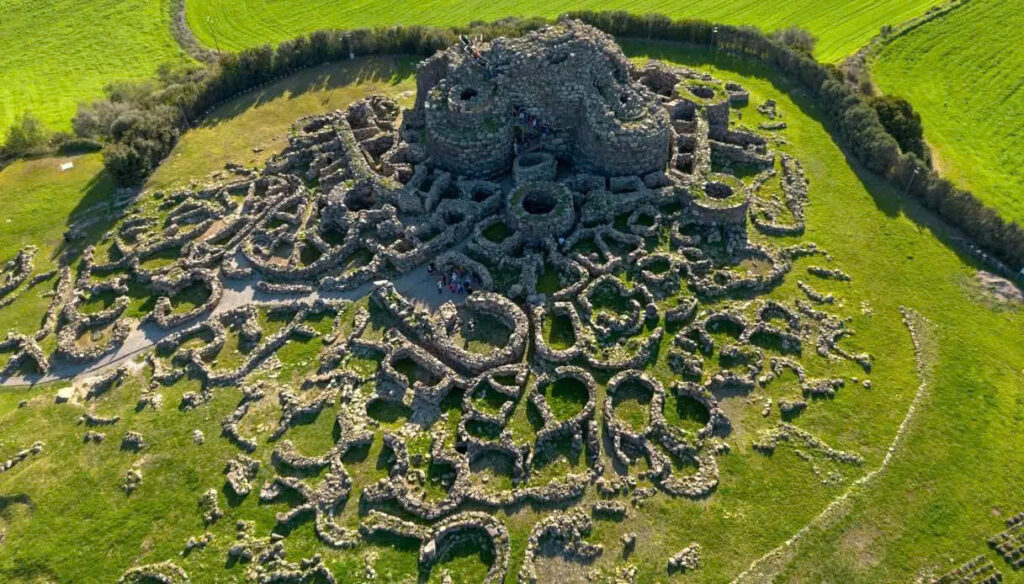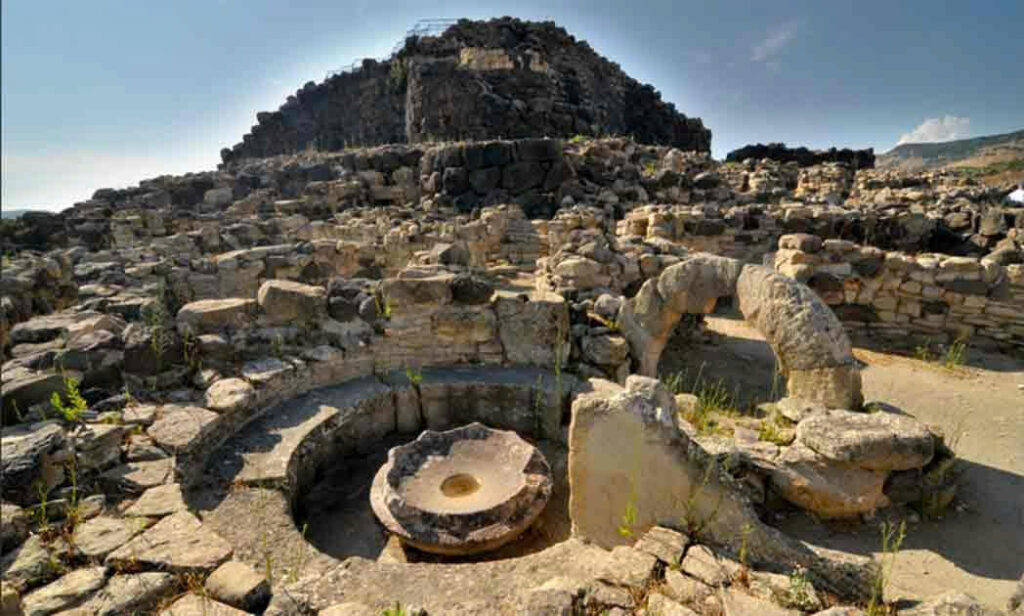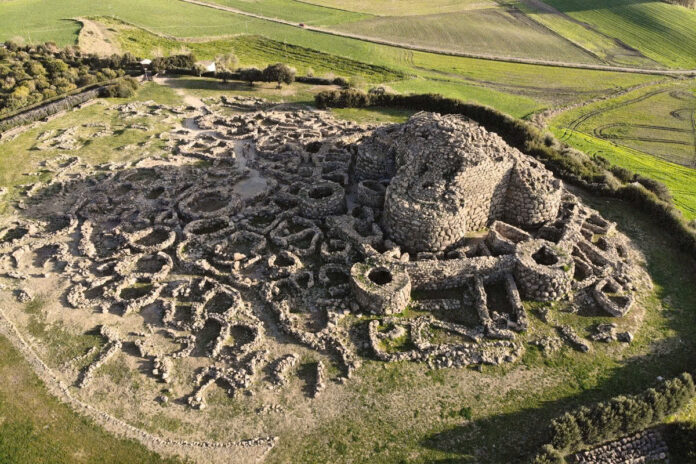In the heart of central-southern Sardinia, near the mystical Giara plateau, lies one of humanity’s most remarkable ancient settlements – Su Nuraxi Barumini. This extraordinary Nuragic village stands as the crown jewel of prehistoric Mediterranean civilization, earning its place as Sardinia’s only UNESCO World Heritage Site in 1997.
The Legacy of Stone Giants
What Makes Su Nuraxi Special

The name “nuraghe” translates to “pile of stones and cavities,” describing the distinctive tower-like architecture that defines this ancient culture. While over 7,000 nuraghi dot the Sardinian landscape, Su Nuraxi Barumini represents the pinnacle of this architectural achievement – the most magnificent and well-preserved example among thirty Nuragic sites in the Barumini region.
This monumental complex, constructed entirely from local basalt stone quarried from the nearby Giara Park, tells a story spanning over two millennia, from the 16th century BC to the 7th century AD. The site showcases an incredible stratification of human history, making it an invaluable window into ancient Mediterranean life.
Archaeological Marvel Unveiled
The Great Excavation
Between 1950 and 1957, renowned archaeologist Giovanni Lilliu – often called the “father of Sardinian archaeology” – led the complete excavation of this remarkable site. His meticulous work revealed an treasure trove of ancient artifacts: sophisticated tools, bronze weapons, intricately decorated pottery, and ornamental objects that speak to the advanced culture of the Nuragic people.
Lilliu’s dedication brought to light not just stones and structures, but the story of a thriving ancient community that once called this fortress home.
Architectural Brilliance

The complex originally featured a distinctive four-lobed design – a central fortified tower surrounded by four corner towers, all connected by massive bastions. This impressive fortress, dating from the 16th-14th centuries BC, was surrounded by approximately fifty circular huts, along with sophisticated water management systems including wells and cisterns.
The builders demonstrated remarkable engineering knowledge, constructing walls from perfectly fitted stone blocks without mortar. Doors and windows were ingeniously designed with slight inward inclinations – a technique that reduced interior lighting while preventing the stone lintels from breaking under pressure, as the builders understood that stress concentrates at the center rather than the edges.
Life in the Ancient Settlement
A Thriving Community
According to Lilliu’s research, this bustling settlement housed between 100 to 1,000 inhabitants across 40 to 200 huts, depending on the historical period. The village was highly organized, with specialized structures serving different functions within the community.

The largest and most elaborate hut served as the chieftain’s meeting hall, while another significant structure functioned as a community assembly space. Archaeological evidence suggests these gatherings may have included religious ceremonies, as sacred symbols were discovered throughout the site.
Daily Life and Industry
The village buzzed with activity across various specialized areas. Archaeological evidence points to dedicated workshops where craftsmen created tools and pottery, communal kitchens for food preparation, and agricultural processing centers that supported the community’s sustenance. During the early Iron Age (9th-8th centuries BC), the settlement became even more sophisticated with the addition of drainage systems and paved roads.
The Rise and Fall of a Civilization
Cultural Transformation
The 6th century BC marked a turning point for Su Nuraxi Barumini. The settlement experienced significant decline and destruction, followed by periods of rebuilding under different rulers. First, the Carthaginians reconstructed portions of the site, followed later by Roman occupation and renovation.

This cycle of destruction and renewal reflects the broader historical patterns of the Mediterranean, where different cultures met, clashed, and eventually blended. However, the progressive demographic decline ultimately led to the site’s abandonment, ending thousands of years of continuous habitation.
Modern Rediscovery and Preservation
Hidden Treasures Revealed
The story of Su Nuraxi took an unexpected turn in the 1990s during restoration work on Casa Zapata, the residence of Sardinian-Aragonese nobles built in the mid-1500s directly above the ancient Nuragic complex. This renovation revealed yet another Nuragic settlement – Su Nuraxi ‘e Cresia – adding another layer to the site’s already rich archaeological narrative.
Guardian of Heritage

Today, the “Barumini Culture System Foundation” oversees the protection and promotion of these exceptional archaeological complexes. The foundation has established the “Communication and Promotion Centre of Cultural Heritage,” dedicated to Giovanni Lilliu’s memory and mission of preserving Sardinian heritage.
Video
Planning Your Visit
Getting There
Located approximately 244 kilometers from major coastal hotels, Su Nuraxi Barumini requires about a three-hour drive through Sardinia’s beautiful interior. While the journey is substantial, visitors universally agree that experiencing this unique UNESCO World Heritage Site is absolutely worth the travel time.
The site offers guided tours that bring the ancient stones to life, helping visitors understand the sophisticated society that once thrived within these walls.
A Testament to Human Achievement

As Giovanni Lilliu eloquently observed: “No other expression from antique island architecture, or even from times closer to us, reveals the sense of power, majesty, solidarity and monumental effort, religiosity that appears in Nuragic buildings.”
Su Nuraxi Barumini stands not merely as a collection of ancient stones, but as a testament to human ingenuity, community, and the enduring desire to create something greater than ourselves. This remarkable site continues to inspire wonder and respect for the sophisticated civilization that flourished in Sardinia over three millennia ago, reminding us that the human drive to build, create, and leave lasting legacies transcends time itself.

